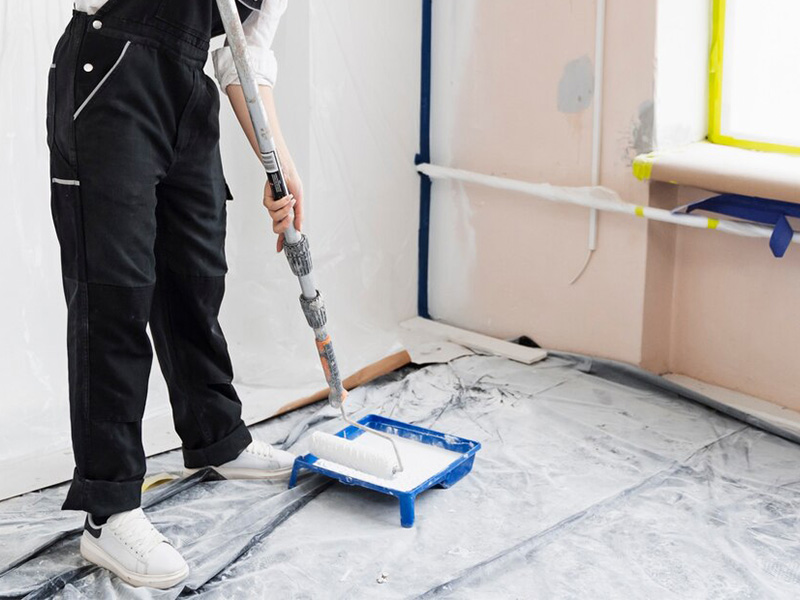Epoxy resin paint, also known as epoxy coating, is a commonly used paint due to its high adhesion, wear resistance, chemical stability, and weather resistance. However, during the application process, some common problems may arise. Here are the common problems and corresponding solutions:
Common Problems
Bubbling
Surface Bubbling: This occurs due to the presence of moisture and volatile liquids, causing the coating to develop many unevenly sized bubbles during the drying process or under high temperature and humidity conditions.
Osmotic Pressure Bubbling: This is mainly caused by water vapor in the concrete. Small bubbles are retained in the dried paint film as the paint viscosity increases during the curing reaction, and the fine channels do not close.
Incomplete Curing
This can be due to incorrect mixing ratios, such as excessive base material or lack of curing agent.
Inadequate mixing can also lead to incomplete hardening in areas with excessive base material.
The use of incorrect curing agents or low temperatures and high humidity can also prevent complete curing.
Cratering
Cratering can cause defects on the surface of the epoxy floor, significantly reducing its aesthetics and practicality.
Surface Whitening, Oiliness, and Other Defects
These issues may be caused by factors such as excessive curing agent, slow defoaming speed, too fast curing speed, or excessive humidity in the construction environment.
Solutions
Bubbling
Apply a waterproof layer on the ground base to prevent moisture from penetrating upwards and strictly control the moisture content of the base or waterproof layer within 8% before proceeding with the epoxy application.
Check for bubbles on each coat after troweling or coating, and use a defoaming roller to deflate the bubbles by rolling back and forth on the floor. Ensure no bubbles are missed and proceed to the next step after the coating has cured.
Incomplete Curing
Prepare materials according to the mixing ratio of the base material and curing agent, and ensure thorough mixing during construction.
Avoid using incorrect curing agents.
Avoid construction in low-temperature and high-humidity conditions. If construction must be done in low temperatures, select a curing agent that reacts at lower temperatures.
For areas with incomplete curing, neatly cut them out with a utility knife, clean the surface, wipe with xylene, apply tape around the repair area, fill with paint after the primer dries, smooth with a trowel at the tape joint, and sand down any visible修补痕迹 with a sanding machine if necessary.
Cratering
Ensure uniform and thorough sanding of the substrate, cleaning up any dust produced.
Thoroughly remove oil contamination on the base ground.
Thoroughly clean the water and oil in the air compressor, conduit, and spray gun.
Keep the construction site closed to prevent dust.
Select an adaptable floor paint material and strictly test the selected floor paint composition.
During the floor paint construction process, an antifoaming agent can also be used to prevent surface cratering by dispersing it in the floor material to reduce the fluidity of different paints with low surface tension.
Surface Whitening, Oiliness, and Other Defects
Adjust the amount of curing agent.
Control the construction temperature and humidity.
Use vacuum degassing treatment.
Select an appropriate curing agent.
Additional Considerations
Regularly clean the coating surface to prevent corrosion caused by prolonged exposure to pollutants such as bird droppings and resin.
Avoid scratching the coating surface with sharp objects and prolonged exposure to strong ultraviolet rays.
For coatings requiring long-term protection, consider regular professional maintenance.
In summary, addressing the common problems associated with epoxy resin paint requires careful preparation, precise application techniques, and attention to environmental conditions. By following these solutions, you can ensure the quality and durability of your epoxy resin paint application.




